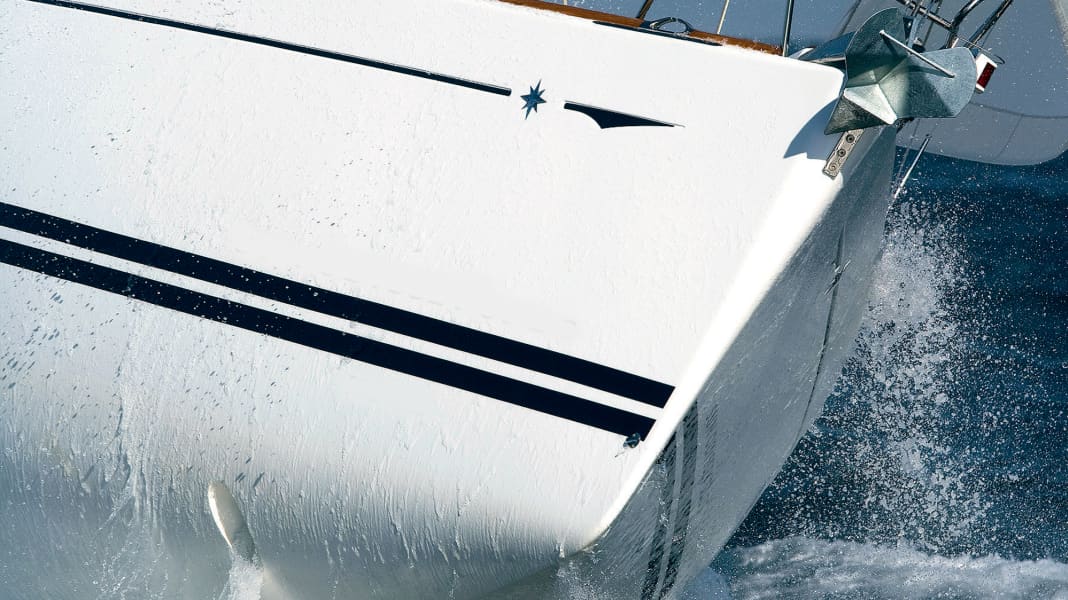
Owner Parlow had to leave his sailing yacht, which was only six months old, in the life raft. The French-built vessel with CE category A (high seas) had taken on considerable amounts of water in the bow area during a trip in the Bay of Kiel and quickly sank. Parlow was unable to find the cause. After the salvage operation, it turned out that the bow thruster, which was glued into the hull, had broken out. It had not been additionally secured. Owner Parlow was not at fault for the accident. Parlow does not want to make a claim on his hull insurance because uninsured damage also occurred and he assumes that the dealer will pay for the damage. After all, the ship is still covered by the contractual warranty, which is valid for a period of two years from delivery. However, the dealer rejects all claims made. He had not caused a defect that could have led to the ship sinking. He is not liable for errors made by the manufacturer's shipyard.
The lawyer adds:
There is an objective breach of the purchase contract. This is because the sailing yacht certified for category A was obviously unsuitable for its intended use. Owner Parlow is therefore entitled to subsequent fulfilment (new delivery or rectification).
The fault of the dealer required for further claims for damages is actually absent. He is not responsible for production errors. This would only be different if concrete evidence of the faulty installation of the bow thruster had been apparent to him. However, even a careful inspection of the yacht prior to delivery would not have enabled the dealer to notice the defective installation design.
The fault probably lies with the manufacturer's shipyard
The dealer is right when he says that he is not liable for this. He also does not have to accept liability in accordance with Section 278 BGB. According to this provision, the principal is liable for the misconduct of his vicarious agents. However, the shipyard was not such an assistant to the dealer in the fulfilment of the purchase contract. This is because the dealer is only obliged to provide the buyer with ownership of the purchased item, but not to manufacture it. Owner Parlow will therefore not be able to assert any claims for damages against the yacht dealer beyond the claims for subsequent fulfilment.
However, he can contact the shipyard directly, even if he has not concluded a contract with them. The basis for the claim arises from tort law (Section 823 (1) BGB).
It is important to note that Parlow does not have to bring an action at the registered office of the shipyard located abroad. Rather, the court of the place where the harmful event occurred has jurisdiction in accordance with Art. 7 No. 2 Brussels I Regulation.
Injured party must prove shipyard's fault
In the legal dispute, however, Parlow will have to prove that the shipyard was at fault. A court expert opinion will therefore have to clarify whether it was sufficient to glue in the bow thruster or whether constructive safeguards would have been necessary. If so, it would have to be assumed that the shipyard was at fault. There are good arguments in favour of this, as the new yacht sank after just six months through no fault of the skipper.
However, a legal dispute will involve considerable legal costs, especially for the expert opinion, for which Parlow must first make advance payments. Particularly if there is no legal expenses cover, it is therefore advisable to coordinate the specific procedure closely with your own hull insurer, even if it appears that the dealer or the shipyard will have to pay for all or most of the damage.
The comprehensive insurer will compensate the property damage, especially if so-called all-risk cover has been agreed. If the comprehensive insurer is liable to pay, it will subsequently conduct a recourse action itself against the opposing parties involved.
This is because the policyholder's claims are legally transferred to the comprehensive insurer insofar as the latter has settled the claim.

